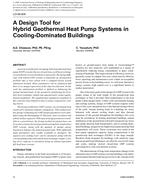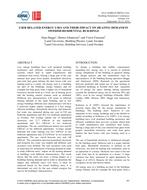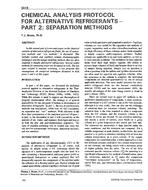Although building codes have addressed the subject of smoke management in atrium spaces since the early 1980s, system performance was not described in terms of a design objective that related the development of hazardous conditions to specific fire scenarios and smoke production. Until the publication of NFPA 92B (NFPA 1991), designers were likely to use a mass flow-based calculation method to predict the position of a smoke layer interface in a large-volume space. NFPA 92B added a predictive correlation that generated a smoke layer interface position at any given time. The 1993 Building Officials and Code Administrators International (BOCA) Building Code codified the NFPA 92B approach but incorporated both predictive methods. Compares the two methods for a range of atrium areas and aspect ratios. The results illustrate that the two methods are not equivalent and will not produce comparable results. Further analysis was conducted to reconcile the two methods and develop an approach that will permit designers to produce comparable hazard analyses regardless of the method used. Use of a plume centreline temperature correlation to adjust the maximum expected layer temperature is suggested as a reconciliation technique. A result of the analysis is the recommendation to reevaluate the fundamental correlation used as the basis for the regular ceiling calculation method, in order to bring it into agreement with the mass flow/entrainment used in the irregular ceiling calculation method. A suggested series of adjustments is provided to align the regular ceiling and irregular ceiling calculation method results over a broad range of interface heights.
Units: Dual
KEYWORDS: year 1997, Comparing, atria, smoke ventilation, jets, calculating, height, ceilings, irregular, accuracy, designing, standards, USA
Citation: Symposium, ASHRAE Transactions, Vol.103, Part 2, Boston 1997
Product Details
- Published:
- 1997
- Number of Pages:
- 15
- File Size:
- 1 file , 1.5 MB
- Product Code(s):
- D-16640


